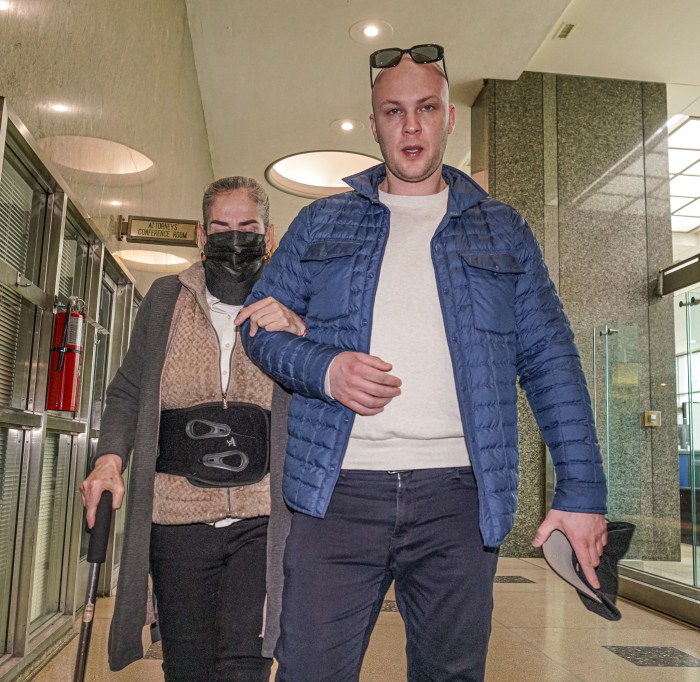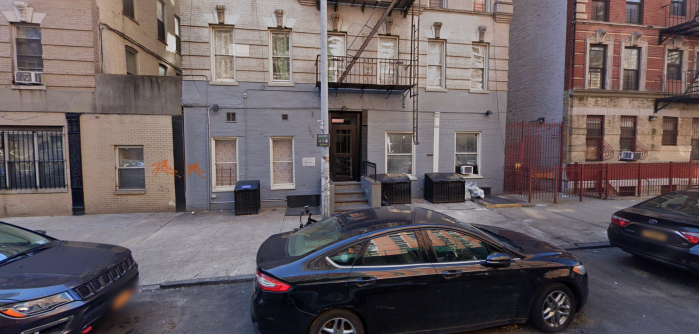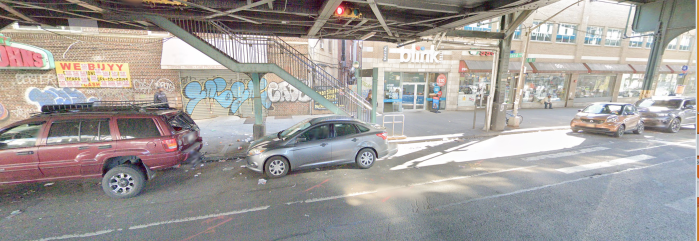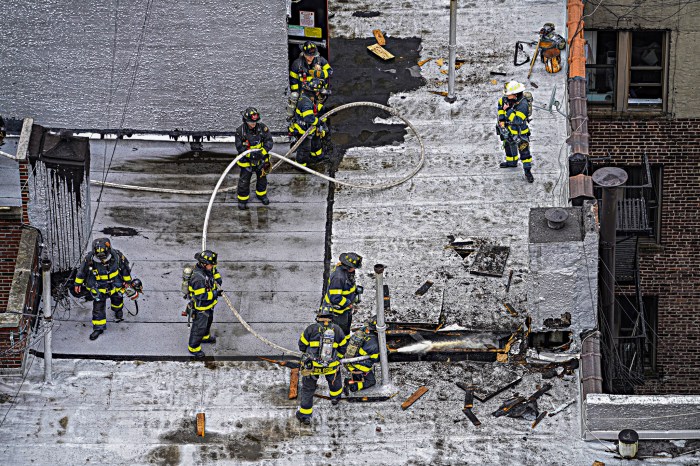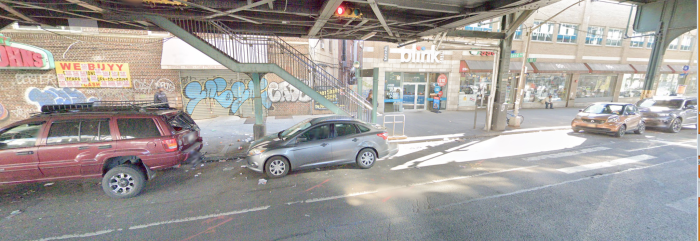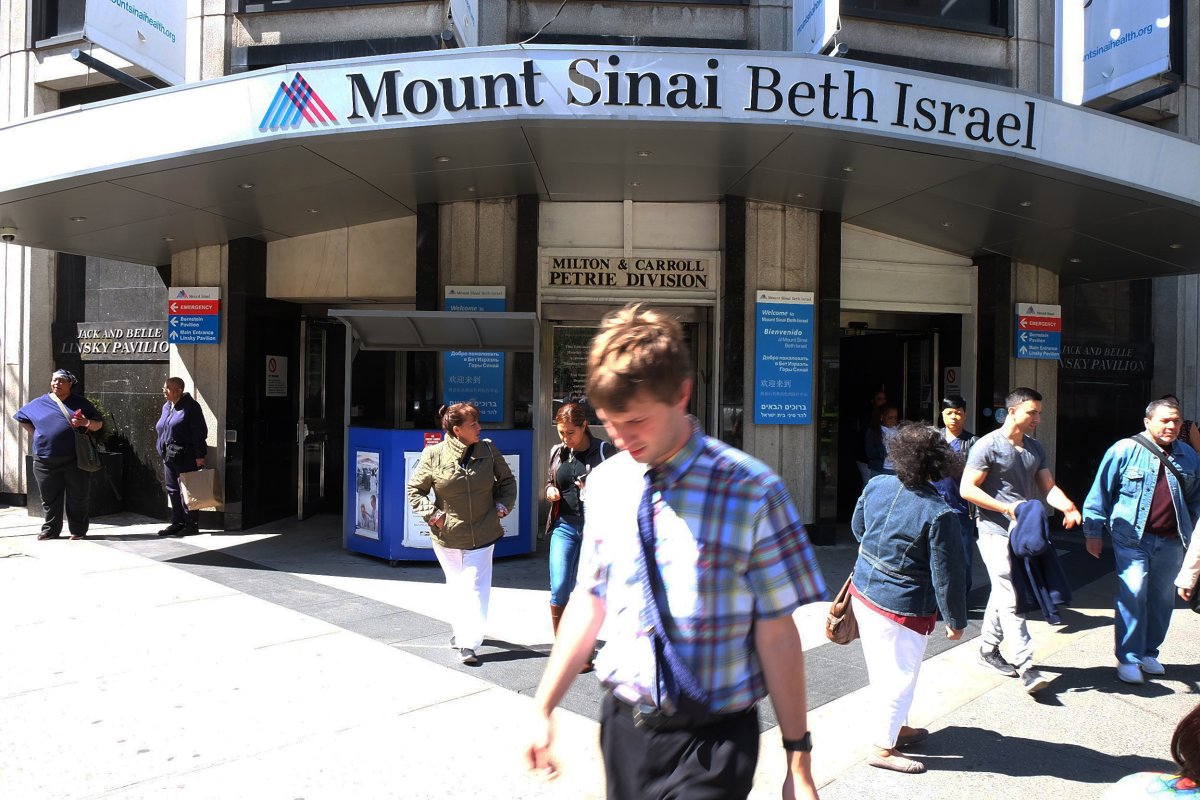
BY LINCOLN ANDERSON | Answering mounting questions about the future of Mount Sinai Beth Israel Hospital, on Wednesday, Mount Sinai Health System announced a $500 million investment to create a new “Mount Sinai Downtown” health network — the centerpiece of which will be a new, much smaller hospital on E. 13th St.
The new Downtown network, a press release said, will “usher in a sweeping transformation of care delivery from river to river below 34th St.”
As has been rumored and reported over the past year, the current Mount Sinai Beth Israel Hospital — which occupies the full block of prime Gramercy real estate between E. 16th and E. 17th Sts. and First Ave. and Nathan D. Perlman Place — will eventually be sold, a P.R. spokesperson confirmed.
In turn, the key feature of the new plan is a vastly scaled-down Mount Sinai Downtown Beth Israel Hospital to be built on the site of the New York Eye and Ear Infirmary of Mount Sinai — specifically, on the site of its residents building, at 321 E. 13th St. The press release said the new hospital would be built at E. 14th St. and Second Ave. However, the spokesperson confirmed that the plan is for it to be built at the residents building site.
The Eye and Ear Infirmary extends from E. 14th St. to E. 13th St. along Second Ave., with its north building located on E. 14th St. and its south building on E. 13th St.
An Eye and Ear employee who spoke to The Villager last week, however, said staff there had been previously told that the infirmary’s south building was being eyed for a smaller-sized hospital — but that plan apparently was up in the air. Mount Sinai recently told staff living in the infirmary’s 14-story residents building on E. 13th St. that they would have to vacate by the end of August.
In addition, a number of Beth Israel nurses had told The Villager two weeks ago that they were being told all the rebuilding plans were now totally off the table and that the plan was simply to close the hospital — and soon. Beth Israel’s Gilman Hall residence, at E. 17th St. and First Ave., which is currently being emptied, was reportedly being considered as a site for the new hospital, as well, at least until recently. This Tuesday, Crain’s reported that Gilman Hall has now been put on the market for $80 million.
All proceeds from property sales are to be funneled back into the nonprofit Mount Sinai Health System.
All the employees who spoke to the newspaper in the past two weeks had accurately predicted that a major announcement on the hospital and infirmary was imminent.
New emergency room
The new hospital will include an emergency department, along with “greatly expanded primary, specialty, behavioral and outpatient services,” the press release said.
“This E.D. will accept ambulances and be able to handle all emergencies, such as heart attack and stroke, on site. It will also include a pediatric E.D.,” the release continued. “Patients with the most complex conditions will be stabilized and transported to other hospitals in the Mount Sinai Health System.”
That sounds a bit similar to the setup at Northwell’s Greenwich Village Lenox Health 24/7 stand-alone emergency department, which opened two years ago in the former St. Vincent’s O’Toole building, at W. 12th St. and Seventh Ave.; patients from G.V.L.H. needing higher-level care are transported by ambulance to full-service hospitals.
70 inpatient beds
The smaller Mount Sinai Downtown Beth Israel Hospital is planned to have roughly 70 beds.
“The new MSBI hospital’s inpatient beds may be increased in the event the community’s healthcare needs require additional capacity,” the release noted.
Over all, it will be a four-year building plan — dubbed “a gradual transformation” — during which the existing hospital will remain open and its healthcare services will not be interrupted, the press release assured.
“Patients will be able to continue to see the doctors they know and trust,” the release stated, though, again, adding, “The most complex cases and deliveries” will be treated at other hospitals in the Mount Sinai Health System network.
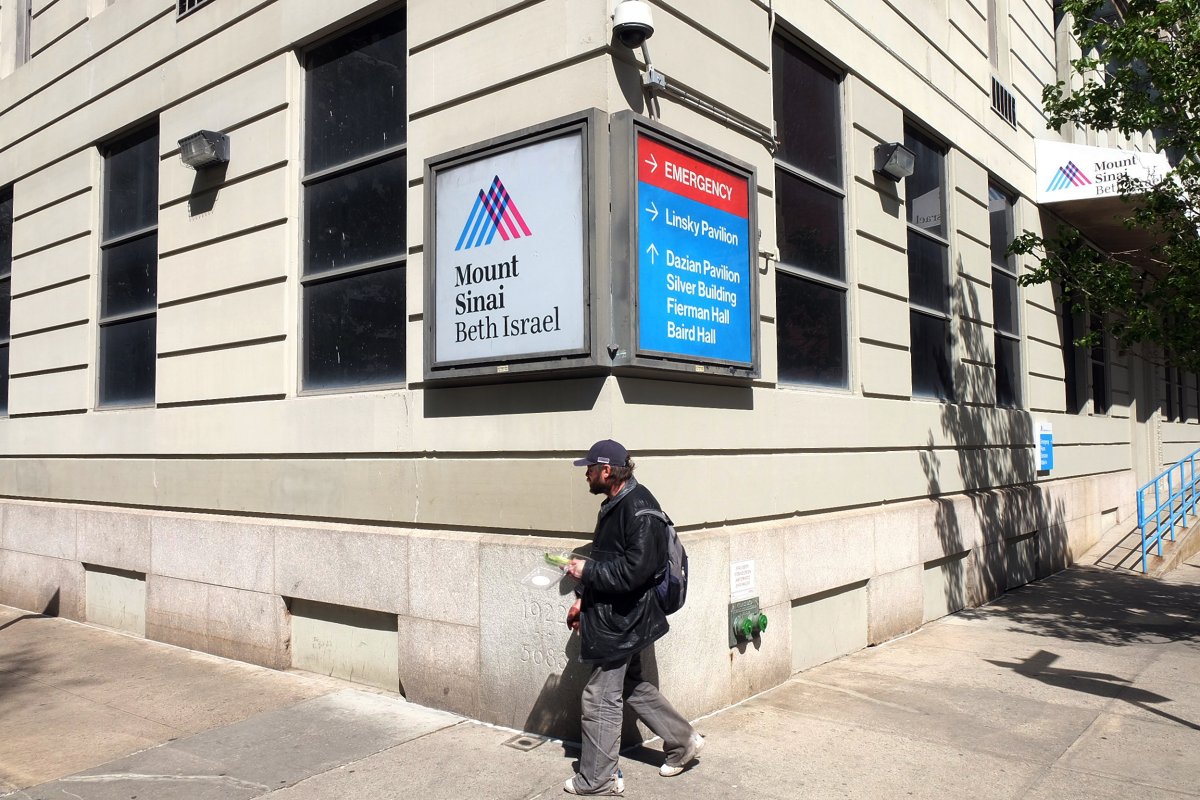
Mount Sinai called the existing Gramercy hospital’s infrastructure “aging and outdated,” unable to meet the current needs of the “healthcare landscape.” The current hospital reportedly has more than 800 inpatient beds.
“On average, less than 60 percent of the hospital’s licensed beds are occupied, and patient volume at the financially troubled hospital has decreased by double digits since 2012,” the press release stated.
‘A healthcare revolution’
While 19 New York City hospitals — including St. Vincent’s and Cabrini, both in the Downtown area — have shut their doors since 2000, Mount Sinai Health System is choosing instead to “transform care delivery, in order to dramatically improve access, increase quality and preserve jobs,” the release stated. “Mount Sinai’s investment will create a revolutionary network of greatly expanded primary, specialty, behavioral and outpatient surgery services that will address the healthcare needs of today and the future.”
According to the announced plan, the network will maintain three major outpatient facilities — including the existing Phillips Ambulatory Care Center, or PACC, on Union Square East — which all together have more than 35 operating and procedure rooms, plus a network of 16 physician practice locations with more than 600 doctors, attending to 1 million patient visits per year.
The PACC — which is undergoing a renovation — will see its services expanded to include endoscopy (digestive tract scoping) and additional medical and surgical specialty services. By early next year, the PACC will also house an urgent-care center.
As another Beth Israel Mount Sinai employee anonymously told The Villager two weeks ago, the new plan for Beth Israel does, however, include retaining the Bernstein Pavilion, on Nathan D. Perlman Place, just south of the main hospital block, as a mental-health outpatient and inpatient hub.
Eye and Ear enhanced
Additionally, New York Eye and Ear Infirmary of Mount Sinai will be “preserved and enhanced,” the press release stated.
Patients will be “better served” by the new health network, the release stated, noting that treatments under the new model will be done in the “most appropriate setting, whether in a traditional hospital bed, an outpatient practice, a state-of-the-art surgical facility, or even in the patient’s home.”
Ultimately, the Mount Sinai Downtown network will be “one of the most innovative and accessible healthcare systems in the country,” the release assured.
‘Smaller is good’
Naturally putting a positive spin on the downsizing, Kenneth Davis, Mount Sinai Health System’s president and C.E.O., said the goal, simply put, is to keep people out of the hospital — which is why a smaller facility makes sense at this point.
“For several years, we have been transforming the Mount Sinai Health System toward a new model of care, where we focus on keeping entire communities healthy and out of the hospital,” Davis said. “Mount Sinai Downtown is a dramatic next step that will enable us to improve access and increase quality by providing care for residents of Downtown Manhattan where they live and work.”
Whereas St. Vincent’s, which closed in 2010, was the last remnant of the city’s once-sweeping Catholic hospital system, Beth Israel is part of a large healthcare system. In fact, Mount Sinai is the biggest private employer in New York City and hires, on average, about 2,000 people per year.
Impact on B.I. staff
As for the current Mount Sinai Beth Israel employees, the nurses who recently spoke to The Villager said they are being told that the healthcare giant will try to provide them jobs in its other hospitals and facilities. Although, with a shrunken hospital, one wonders if there will be some accompanying job shrinkage, as well.
The healthcare system, the release said, is “committed to retraining and placing as many of the MSBI employees within the Mount Sinai Health System as possible. The few who cannot be placed will receive help finding alternate employment. All union employees affected by the transformation will be offered other union opportunities at equal pay. Additionally, as clinical programs are reconfigured, Mount Sinai will accommodate and place all potentially displaced physicians-in-training within one of its highly ranked programs.”
George Gresham, president of 1199 SEIU United Healthcare Workers East, which represents more than 4,000 nurses and caregivers at Beth Israel Hospital, praised the agreement the union and health system hashed out regarding the new Downtown health network plan.
“As the healthcare industry continues to shift to outpatient clinics and homecare, more and more hospital beds have been left empty and Beth Israel has struggled with substantial financial losses,” Gresham said. “The Mount Sinai Downtown plan recognizes that in order to transform our healthcare delivery system for the 21st century and provide high-quality services to the community, we must have good union jobs for those who deliver that care.”
Borough is ‘over-bedded’
To back up the planned radical reshaping of Beth Israel, the press release included some facts about the current dwindling state of hospital-based care.
In short, with the continued shift toward ambulatory and home care, there are currently “too many” inpatient beds, according to Mount Sinai, particularly in Manhattan where there are six beds per 1,000 people, in contrast to New York City and Westchester combined, where the ratio is 3 per 1,000 people. In fact, the rate of overall empty hospital beds in New York City has increased in recent years, even despite hospital closures. In 2012, for example, 25 percent of hospital beds were empty while in 2014, the number increased to 29 percent, according to the statistics provided.
Meanwhile, the closure of St. Vincent’s actually has not resulted in the increased use of inpatient beds in Downtown Manhattan hospitals, according to Mount Sinai. In fact, since the closure of St. Vincent’s, the total average daily inpatient census of Bellevue, N.Y.U. Langone, New York-Presbyterian Lower Manhattan, Mount Sinai Beth Israel and New York Eye and Ear has declined, according to Mount Sinai. (No doubt, this trend has a great deal to do with current insurance models, which discourage hospital stays and aggressively promote ambulatory surgery as much as possible.)
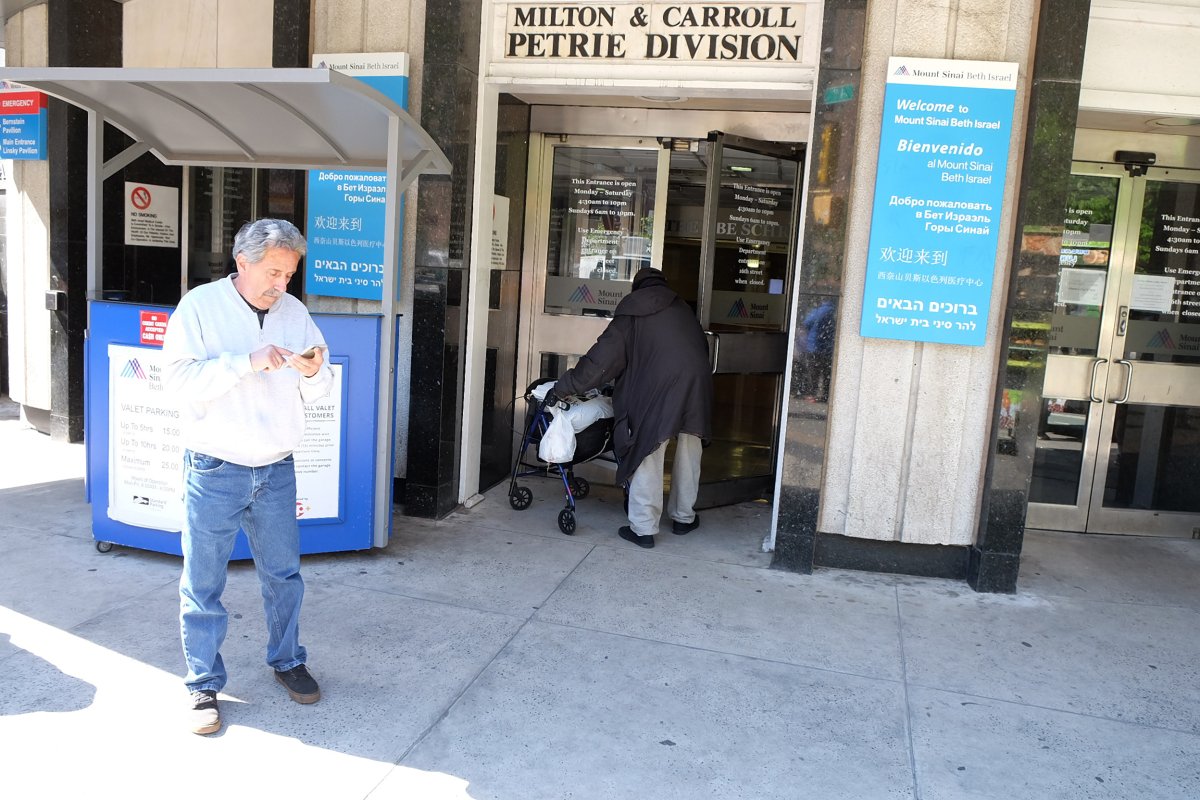
Mount Sinai has started outreach to local politicians and community leaders with the stated goal of “working closely with the community to share its plans” and to discuss implementation to guarantee a “smooth transition” for patients and staff. Additional updates and information about the rebuilding scheme will be posted on the Web site www.mountsinai.org/downtown.
Political powwow
Two representatives of local politicians, speaking earlier this week, told The Villager that there was, in fact, a meeting last Friday between a group of all the local electeds or, in some cases, their representatives and Mount Sinai Beth Israel officials. The sit-down reportedly lasted more than one hour.
“They’re saying they’re not closing,” one pol’s chief of staff, who attended the meeting, told The Villager this Monday. “They’re reducing the size and the number of beds. They said they’ll know more by Thursday of this week; next week, they’ll know even more, and so on. But they haven’t made decisions on a lot of stuff. They’re saying they’re not closing — but that they need to change. They’re saying it’s going to be a ‘multi-year process, a four-year process’ and no reduction in health services while this is going on. Now we want them to come back with specifics.”
The press release issued Wednesday (not Thursday, as the politicians were apparently told), would appear to lay out those specifics. Whether Mount Sinai ultimately follows that road map, however, will remain to be seen.
Assemblymember Richard Gottfried, chairperson of the Assembly’s Health Committee, for one, said he is taking Mount Sinai at their word at this point.
“Beth Israel is not closing,” Gottfried said. “They are working on a multi-year plan that will keep an inpatient hospital with an emergency department on the property. There will be no service interruption as this is done.”
Many concerns remain
However, in a letter to Mount Sinai C.E.O. Davis last week, the local politicians expressed serious concerns about either Beth Israel’s closing or downsizing.
“First, we are extremely concerned about any loss of emergency room services,” they wrote. “We’ve seen this story before citywide, and Manhattan has suffered in particular with the shuttering of St. Vincent’s Hospital in Greenwich Village. After the closure of St. Vincent’s, hospitals across the borough experienced a sharp rise in visits. The Daily News reported that Bellevue went from 8,000 to 10,000 monthly emergency room visits.
“The same article reported that Beth Israel, N.Y.U. Langone and New York-Presbyterian / Lower Manhattan Hospital also saw significant increases in visits and wait times.
“Wait times at many emergency rooms in Manhattan are already double the national and state averages,” the politicians noted, “while residential construction continues unabated and the borough’s population is growing. The loss of another emergency room could be catastrophic for our community.”
Commission check
“We also continue to lose inpatient beds,” the politicians told Davis. “The closure of St. Vincent’s alone resulted in the loss of 400 in-patient beds. In 2006, the Commission on Health Care Facilities in the 21st Century proposed closing 328 inpatient beds at the former Cabrini Hospital based on the ability of hospitals like Beth Israel to pick up the slack. The commission believed that, ‘Cabrini’s patients readily could be absorbed by its coverage partners, including Beth Israel Petrie Division, Bellevue, N.Y.U. Tisch and Mount Sinai hospitals.’ Similarly, it recommended that Manhattan Eye, Ear and Throat Hospital downsize all of its 150 beds — and that subsequently was done.
“The commission did not, however, recommend any reduction of beds for Beth Israel. We cannot yet assess the magnitude of the impact that downsizing or closing Beth Israel would have on other hospitals, or the negative impacts for the healthcare of all Manhattanites,” the politicians said.
‘Losing hospital services’
“We are concerned about Downtown hospital services more broadly,” the elected officials added. “In light of the growing population of our borough, we must carefully consider whether Manhattan would have enough hospital beds if we were to lose the beds at Beth Israel. More particularly, we want to ensure that the Downtown community retains the hospital services we need in the area. The loss of the Beth Israel NICU [neonatal intensive care unit] is instructive — while Mount Sinai may have felt comfortable with closing the facility at Beth Israel because it has other NICU’s in its system, this decision forces local parents to travel out of their area at a highly stressful and time-starved period in their lives.”
In a statement issued on Wednesday after the announcement, Councilmember Rosie Mendez, whose district includes Beth Israel, indicated she is hopeful about the proposed plan.
“While the building located on First Ave. and E. 16th St. will be closing at some future date, it is important to note that the institution and services that the community receives from Beth Israel Mount Sinai Hospital will remain,” she said. “BIMS will remain, but it will have a smaller campus that will include an emergency department with fewer in-patient beds and will continue to provide needed critical services with a new state-of-the-art facility. Equally important, BIMS has stated that existing E.D. and critical-care services would not be interrupted. I am prepared to work with BIMS as it moves forward in its transformation, as well as working closely with my colleagues and our communities as we ensure that quality services remain in place.”








